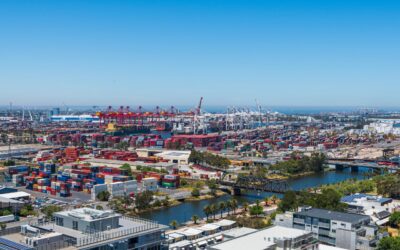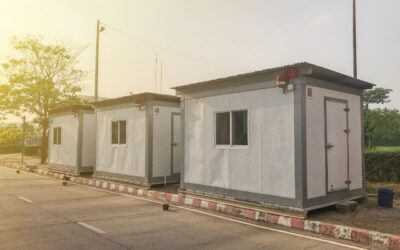If you’ve recently become the proud owner of a brand new shipping container it’ll probably be in your interests to do what you can to make sure it lasts as long as it can. Don’t get us wrong, shipping containers are naturally strong, tough and durable, but there are definitely a few additional steps you can take to stretch its lifespan to the max.
Coat of paint
One of the easiest ways to increase the lifespan of your shipping container is to give it a coat of paint. You can do this yourself, of course, but a lot of shipping container companies can do this for you using the most suitable paint while saving you the time, hassle and effort.
The new coat of paint will not only look great but will add water and corrosion-resistant properties to your shipping container. As you’ll probably know, rust is one of the biggest threats when it comes to the overall lifespan of a container but a good coat of paint that’s maintained over time will keep a protective layer against the elements.
A good opportunity with paint also comes in the form of branding too if the container is being used as part of a business.
Look after your roof
A shipping container is a bit like a house in that it’s only as good as the roof above it. Looking after the roof of your shipping container is therefore just as important.
While you always see shipping containers stacked one on top of another in ports around the world, it’s important to remember that it’s the reinforced corner castings of the shipping container that gives it its strength to withstand these weights. The roofs themselves are not made to support weight and will flex even when walked across.
Container roofs are also flat so they are prone to collecting pools of water, ice, leaves and other debris from their environments. It’s important to clear these off as regularly as possible again to prevent rust and leaks.
Mount your container
Mounting your container on planks, bricks, piles or some other foundation might not seem the most obvious thing to do but it can certainly be something to prolong its lifespan.
The main situation for doing this would be if your shipping container would otherwise be placed directly onto the earth, particularly areas that become easily damp and/or boggy. Without a gap below the shipping container, moisture can easily get trapped which can lead to corrosion in the flooring.
A container on the ground is also susceptible to unexpected flooding which can penetrate the container and cause damage internally as well. The only thing to be mindful of when attempting to mount your container is to do so properly, usually with the help of your container company. If the mounts are uneven, you’ll potentially compromise its structural integrity over time.
Regular lubrication
To get the most out of your shipping container, every part of it requires and deserves your care and attention. The hinges, locking bar brackets, locking bar guides, cam retainers and handles – all of which are found on your shipping container doors, need to be well looked after.
Keeping them well lubricated and greased will give them anti-moisture, anti-corrosion protection and keep them from getting stiff. When joints become stiff, more effort is required to use them and with greater force applied, damage can also be inadvertently inflicted.
Your container doors will probably be the most used part of your shipping container so be sure not to overlook this step as if you lose your doors, the usefulness of your container becomes that much less.
Security
Security may seem a strange thing to include in a discussion about container lifespan but it’s definitely a factor to be considered right from the outset.
Shipping containers are used, primarily for storage, in fixed placements or in transport. Often, the goods inside are of some value and nefarious types may be inclined to break into them, causing damage to the container itself.
A solid lockbox is a great deterrent to stop this from happening. They can be easily installed on any container door and prevent bolt cutters from reaching into your padlock. It’s a really easy step to follow and one that has no negative consequences.
Vents
Last but not least we’ve mentioned things that can damage your container from the outside but you should also think about what can happen from the inside too.
Moisture build-up from within a container is definitely a cause for concern, especially in climates where humidity is a factor and those where the difference in temperatures between daytime and nighttime are extreme. Moisture from within not only leads to corrosion in the same way it does from the outside but will also potentially damage your goods by mould and mildew.
Vents and whirlybirds will encourage and regulate the airflow and temperature inside your container. Whirlybirds are particularly good at providing an escape route for hot air within, while at the same time bringing cool air in which is exactly what needs to happen to keep it moisture free.
Make sure your container lasts as long as it should!
As you can see, there are some easy tips to follow to ensure your shipping container has the lifespan it should. You might not need to follow every single one of them depending on your situation but the more you do, the more likely you’ll be to have a container that goes the distance.









